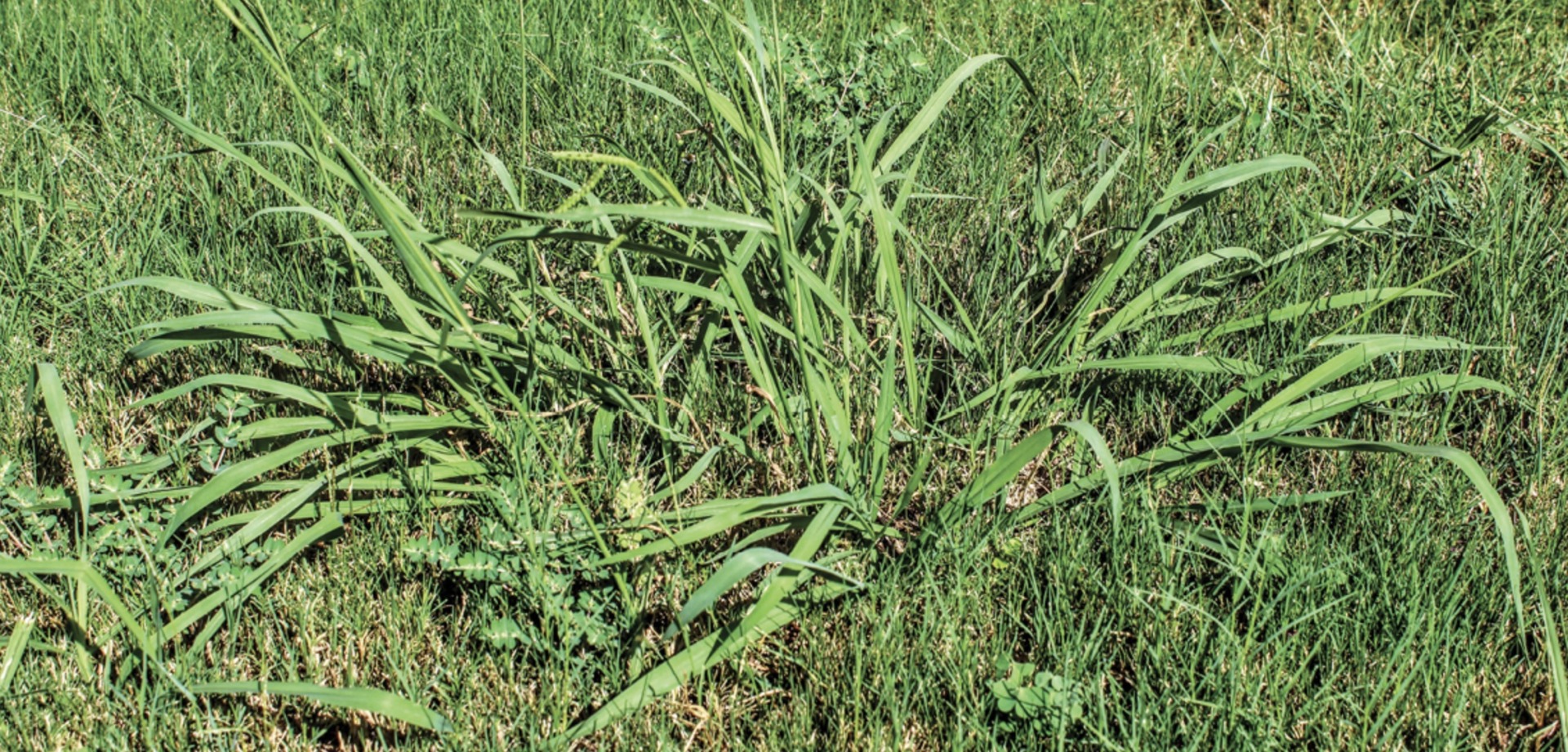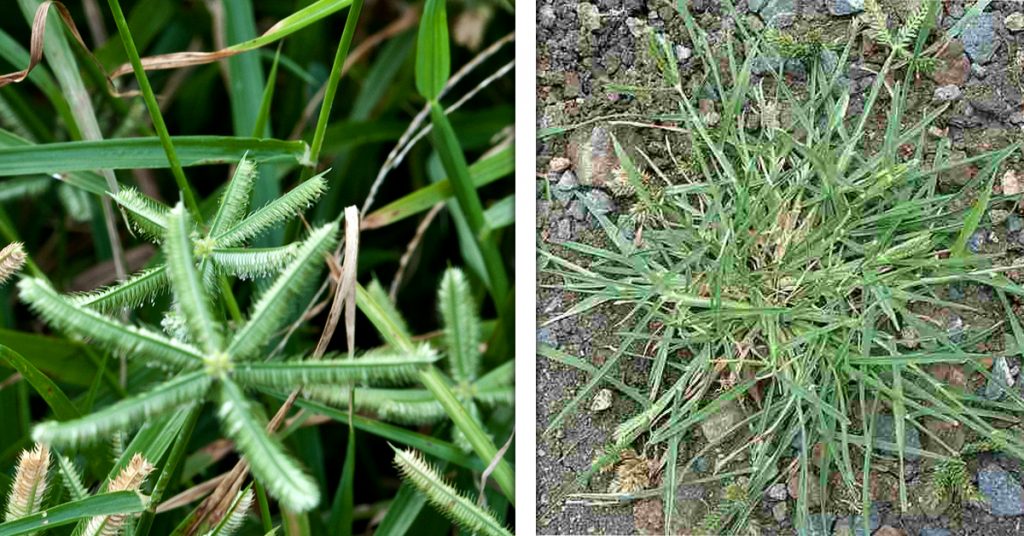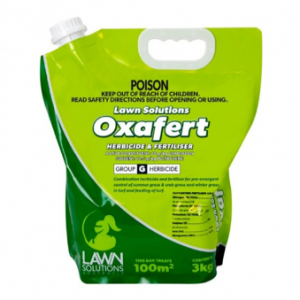Summer Grass Weeds

31 January 2022
Summer Grass Weeds
Not all weeds can be easily treated with common broadleaf herbicides. Some, mainly summer grass weeds, require a specific herbicide product for treatment.
In this article, we talk about summer grass, paspalum and crabgrass/crowsfoot.
Summer Grass
Digitaria Sanguinalis and Digitaria Cilaris

Summer grass is an annual weed that appears in the warmer months of the year. It will then go to seed into autumn where it can emerge over several years. There are two varieties of Summer grass that are very similar in appearance. If left untreated, it can grow as high as 30cm and 1m wide, thrive in conditions of high temperatures and high humidity.
Description
Summer grass is an annual weed that has soft hairy leaves that grow close to the ground in clusters. The grassroots at the node (joint) and the sheathes of the leaf are usually purple-tinged in colour at the base. Because Summer grass spreads by seed, it is extremely important that you act before this happens.
Paspalum
Paspalum Dilatatum

This is a perennial grass weed that is found mostly in the South Eastern states of Australia.
It will start out as clumps and then will spread throughout sparse and poor performing lawns.
Description
This weed has a purple tinge at the base of broad grass leaves that stem from a central crown. It primarily grows throughout the warmer months from late spring to early autumn. This weed spreads through the transportation of sticky seeds. These seeds easily adhere themselves to pets, shoes and objects before falling off in a new location.
Crowsfoot or Crabgrass
Eleusine Indica or Digitaria (Finger-grasses)

Crowsfoot is known by many names, but one it sometimes goes by here in Australia is Crabgrass.
Description
Crowsfoot grass is a summer annual that grows in easy to identify tufts, staying fairly flat to the ground with almost white flat sheathed stems and smooth strap-like leaves.
This weed is difficult to control as can tolerate low mowing and will thrive in nutrient-deprived and compacted soil conditions. It will begin to germinate in the soil when temperatures reach above 15°C and can grow extremely quickly once active.
Seed heads appear usually from late spring or early summer. These seed heads can have as many as ten spikelets on each long stem. In an unhealthy lawn, if left to seed and spread, Crowsfoot will quickly infiltrate right through the entire lawn. Crowsfoot is commonly found throughout most Australian states including Queensland, New South Wales, Victoria, Western Australia and the Northern Territory.
Prevention
The best way to control these types of weeds is to maintain a healthy lawn where they are unlikely to infiltrate and spread. Being proactive and removing them as soon as they appear and before they go to seed will be the key to preventing them from spreading out of control. It is always easier to control weeds from the outset rather than to try to remove them once they get out of hand.
By choosing a suitable lawn species for your area, keeping it healthy and well maintained and at the right mowing height for your chosen variety, you’ll have a leg up on any potential weed invasions.
Treatment
Hand removal
All of the above grass weeds can be removed by hand, but they will continue to re-emerge in sparse unhealthy lawn areas. Getting your grass to spread and thicken will make it difficult for these weeds to infiltrate. Make sure you dig underneath the crown, below soil level and remove the entire root of the plant. Be careful not to spread any seeds during the process. If you act quickly you should be able to eradicate them fairly easily from your lawn this way.
Post-Emergent Herbicides
If these grass weeds have spread throughout your lawn and are out of control, you may need to look at applying a selective herbicide.
Paspalum, Nutgrass & Clover Weed Killer and herbicides formulated with the active DSMA will control paspalum, crowsfoot/crabgrass and summer grass.
These herbicides can be easily mixed in a pressure sprayer, with the addition of a surfactant or wetting agent like Sprayfix or a couple of drops of dishwashing liquid to ensure it adheres better to the leaf. For best results, spray the weeds when they are actively growing during the warmer months. Repeated applications may be required in order to fully eradicate them from your lawn. Make sure you adhere to the application rates and instructions on the product label.
*For kikuyu, buffalo lawns and QLD Blue Couch, it is advised to only spot spray and not spray the entire lawn as it can cause harm to your grass as well.
Due to a supply shortage of DSMA across the industry, many garden centres and stores have no longer been able to get stock of these herbicides.
Another option is to treat the individual weed tufts with a non-selective herbicide like glyphosate (Round Up or Zero). You will need to make sure you do so extremely carefully as it will kill everything it comes in contact with. The safest way is to use a small paintbrush or weed wand and carefully brush the glyphosate only onto the invading weeds leaf.
Pre-Emergent Herbicides
A really effective way of stopping Crowsfoot/Crabgrass and Summer Grass from germinating in your lawn again next year is to apply a pre-emergent herbicide like Oxafert.
These herbicides act by stopping weeds from germinating from the soil in the first place. In order for them to work effectively, you need to apply them before emergence. For many of these weeds, this would mean you would be best applying it in early to mid-spring, but they can be applied at any time.
As always, if you have any more questions please don’t hesitate to contact us for free expert advice on 1800ALLTURF (1800255873) or 07 5543 8304.
WOULD YOU LIKE MORE INFORMATION?
Contact us for expert advice, or come & say hi at our office in Tamborine!



